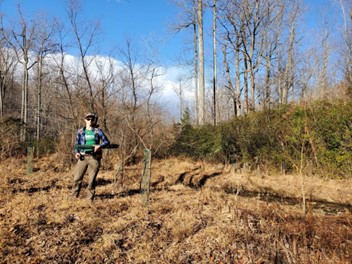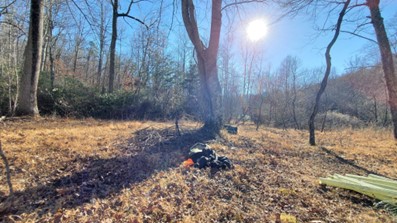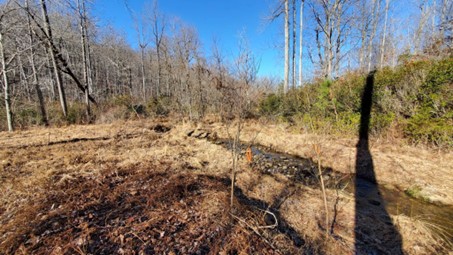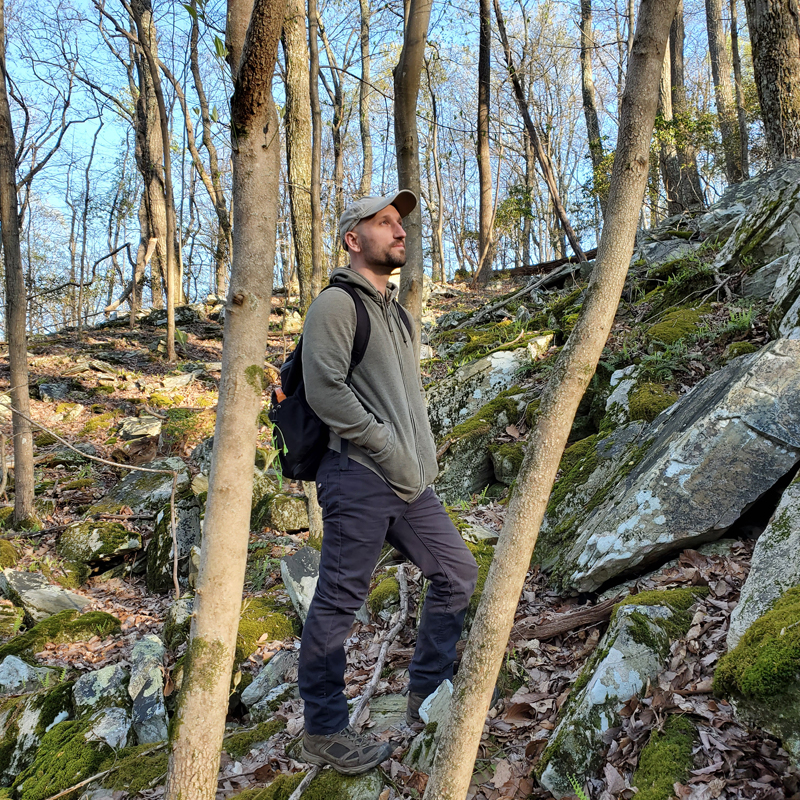Student partnerships have been a constant source of inspiration and hope for our staff here at VOF’s Preserve at Bull Fun Mountains.
Back in 2019, industrious students form James Madison High School led a project to remove woody invasives along Catharpin Creek and replace them with native black willow (Salix Nigra) trees within our Jackson Hollow section. Following a few years of growth and three visits to care for saplings, I recently had the chance to return to spend a few hours tending to the planted trees and collecting survivorship data with Conversation Assistant, Deneith Reif.
We were happy to find that roughly fourteen of the twenty original black willow saplings planted at the restoration site survived! Six of those surviving trees did exhibit stunted growth as a result of significant white-tailed deer (Odocoileus virginianus) browse, unfortunately.

On a high note, substantial mechanical removal (trimming back, digging out, and removing any visible fruiting bodies) of woody invasives (multiflora rose, autumn olive, and Japanese stilt grass) proved effective, as they seemed to be eradicated from the immediate area with no regrowth or newer invasive plants taking their place. Further, no new woody invasive plants were emerging out of the refuse pile as care was taken to remove any extant fruiting bodies at time of removal, so that the whole plants did not have to be removed from site at the time.
I am happy to report further that there appears to be significant naturally occurring root/seed propagation of desirable native trees (willow and alder) along the riparian buffer that are a direct result of making that habitat available by removing so many mature woody invasives. This unexpected amplification of desired species is an encouraging result, especially in such a consistently open and disturbed area (this area is an active floodplain).

To end this visit, Deneith and I removed all herbaceous overgrowth from desired trees in the area and all trees still small enough to need protection from deer browse were “recaged” in an attempt to prevent further browse. We will continue to regularly monitor the site and remove invasives as they appear. We are so grateful for the JMHS students that started this project and have been remained connected to continuing its long-term success!

